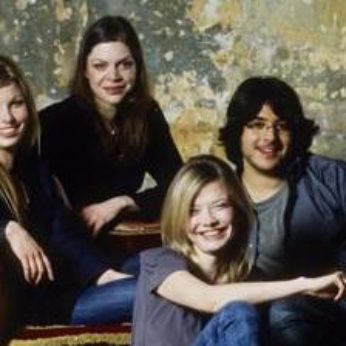Composer: Juan Crisótomo Arriaga (b. 1806 - d. 1826)
Performance date: 04/07/2012
Venue: St. Brendan’s Church
Composition Year: 1823
Duration: 00:25:49
Recording Engineer: Anton Timoney, RTÉ lyric fm
Instrumentation: 2vn, va, vc
Instrumentation Category:String Quartet
Artists:
Chiaroscuro Quartet (Alina Ibragimova, Pablo Hernán Benedí [violins], Emilie Hörnlund [viola], Claire Thirion [cello]) -
[quartet]

Juan
Crisóstomo Arriaga is often called the Spanish Mozart and after listening to
any of his three quartets one can only mourn the great loss to music as a
result of his early death from overwork and tuberculosis ten days before his
twentieth birthday. He was born in Bilbao
on 27th January 1806, the fiftieth anniversary to the day of the
birth of Mozart. He was a violinist prodigy as well as writing his first opera
at the age of thirteen, which was successfully premiered in Bilbao in 1820. Another early work was an
octet for the unusual combination of string quartet, trumpet, guitar, piano and
double bass. When only fifteen he was sent to Paris to study violin and composition at the
Conservatoire under Baillot and Fetis. Before his early death he had already
been appointed a teaching assistant at the Conservatoire.
The
music makes one gasp with delight, the melodies are totally irresistible and
the formal structure appears completely effortless. For those who rejoice in
delicious tunes dazzlingly presented need look no further. His proud teacher
wrote: it is impossible to imagine
anything more original, more elegant nor written with greater purity than these
quartets. There is no doubt Arriaga had a remarkable gift and we are all
the poorer for his early death.
The opening Allegro opens with a brusque question and
a gentle answer, while the second subject picks up on the answer and takes it
further. The development section becomes almost conversational with sudden
interjections to maintain the tension. The Pastorale is a delight, it paints an
idyllic country scene broken into by a tremendous storm scene that ebbs and
flows before the gentle pastorale melody returns. The Menuetto takes after
Haydn, a stormy main section and a folk-like Trio. The Presto Finale takes off
at high speed in the manner of some of Haydn’s last movements, making virtuoso
demands of the four players. The ideas fall over themselves and the speed
hardly slackens. Towards the end the music takes on added depth before coming
to a firm conclusion.
Copyright © 2025 West Cork Music. All rights reserved.
Designed and developed by Matrix Internet